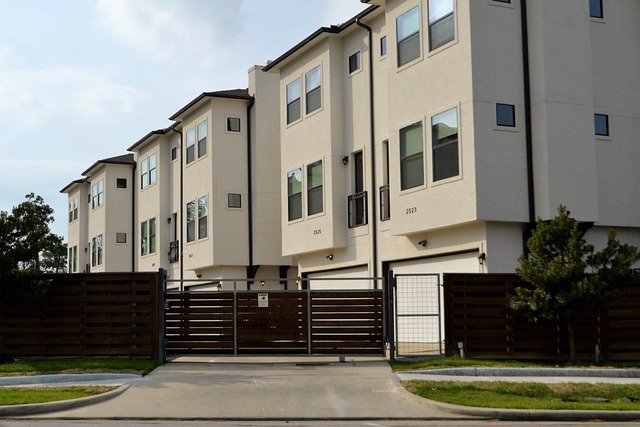Car Loans: Understanding No Down Payment Options for Used Vehicles
Car loans with no down payment options can be attractive for buyers looking to purchase a used vehicle without significant upfront costs. While these financing arrangements offer immediate accessibility to vehicle ownership, they come with specific financial implications that every prospective buyer should understand. This article explores various aspects of no down payment used car loans, including their true costs, available financing options, associated risks and benefits, and strategies for maximizing their value.

Your Guide to Buying Used Cars with No Down Payment
When purchasing a used car without a down payment, you’re essentially financing 100% of the vehicle’s cost. This approach eliminates the need for immediate cash outlay but typically results in higher monthly payments and increased total interest over the loan term. Most no down payment options require good to excellent credit scores (usually 700+), as lenders want assurance that borrowers can handle the higher loan-to-value ratio.
To qualify for a no down payment used car loan, you’ll need to demonstrate stable income, a reasonable debt-to-income ratio (typically under 40%), and a clean credit history. Different lenders have varying requirements, so shopping around is essential. Some dealerships advertise “no money down” offers, but these may include rolled-in fees or higher interest rates to compensate for the increased risk.
Understanding the True Cost of Zero Down Used Car Loans
Zero down used car loans come with several financial implications that aren’t immediately obvious. First, you’ll immediately face negative equity (owing more than the car is worth) since vehicles typically depreciate 10-20% in the first year. Without a down payment to offset this depreciation, you could remain “underwater” on your loan for several years.
Interest costs are significantly higher with no down payment loans. For example, on a $15,000 used car loan with a 60-month term:
-
With $3,000 down payment (7% interest): Total interest paid = approximately $2,961
-
With $0 down payment (8.5% interest): Total interest paid = approximately $3,463
This difference of over $500 doesn’t include the higher interest rate that often accompanies zero-down financing. Additionally, lenders typically require comprehensive insurance coverage with lower deductibles for no down payment loans, increasing your monthly insurance costs throughout the loan term.
Top Financing Options for Used Cars with No Down Payment
Several financing paths exist for those seeking no down payment used car loans:
Traditional banks and credit unions sometimes offer no down payment options for highly qualified borrowers. Credit unions typically feature more flexible terms and lower interest rates than banks, though their requirements may be stricter.
Online lenders have emerged as competitive options, often with streamlined application processes and quick approvals. Companies like Capital One Auto Navigator, Carvana, and Vroom specialize in used car financing with minimal or no down payment requirements.
Dealer financing remains popular for its convenience, though interest rates tend to be higher. Some dealerships offer special “no money down” promotions, particularly for certified pre-owned vehicles. However, these deals may include higher interest rates or extended loan terms to compensate for the increased risk.
Assessing Risks & Benefits of Zero Down Used Car Purchases
The primary benefit of zero down financing is obvious: immediate car ownership without depleting savings. This approach preserves cash flow for emergency funds or other investments and allows you to acquire transportation when needed without delay.
However, significant risks accompany this convenience. Higher interest rates and longer loan terms mean you’ll pay substantially more over the life of the loan. The negative equity situation creates vulnerability if the vehicle is stolen, totaled in an accident, or needs to be sold before the loan is paid off.
Gap insurance becomes particularly important with no down payment loans. This coverage pays the difference between what you owe and what the car is worth if it’s totaled or stolen. Without it, you could be responsible for thousands of dollars even after insurance pays the vehicle’s depreciated value.
Financing Options Comparison for No Down Payment Used Car Loans
| Financing Source | Typical Interest Rate | Approval Requirements | Special Features |
|---|---|---|---|
| Credit Unions | 5.5-7.5% | Good credit (660+), membership | Lower rates, flexible terms |
| Online Lenders | 7.0-12.0% | Fair to good credit (600+) | Fast approval, convenient application |
| Traditional Banks | 6.0-9.0% | Good to excellent credit (680+) | Relationship discounts possible |
| Dealership Financing | 7.0-15.0% | Varies widely | Convenience, special promotions |
| Buy-Here-Pay-Here | 15.0-25.0% | Minimal credit requirements | High acceptance rate, high costs |
Prices, rates, or cost estimates mentioned in this article are based on the latest available information but may change over time. Independent research is advised before making financial decisions.
Maximizing Benefits: Smart Strategies for No Down Payment Deals
If you’re committed to purchasing a used car without a down payment, several strategies can help maximize benefits while minimizing risks. First, focus on vehicles with historically strong value retention, such as certain Honda, Toyota, and Subaru models, which depreciate more slowly and help reduce negative equity concerns.
Consider shortening your loan term if possible. While this increases monthly payments, it reduces total interest paid and accelerates equity building. Aim for a 48-month or shorter term rather than the increasingly common 72-84 month loans.
Shop for gap insurance independently rather than through the dealership, as third-party providers often offer lower rates. Additionally, making even small additional principal payments when possible can significantly reduce your loan term and interest costs.
Be wary of add-ons and extended warranties that dealers may push heavily during no down payment transactions. These products, when rolled into the loan amount, dramatically increase your debt load and extend the negative equity period. If you want these protections, negotiate their prices or shop for third-party alternatives.
Finally, consider making a partial down payment if possible, even if small. Every dollar paid upfront saves you more in interest over the loan term and helps establish equity sooner.




